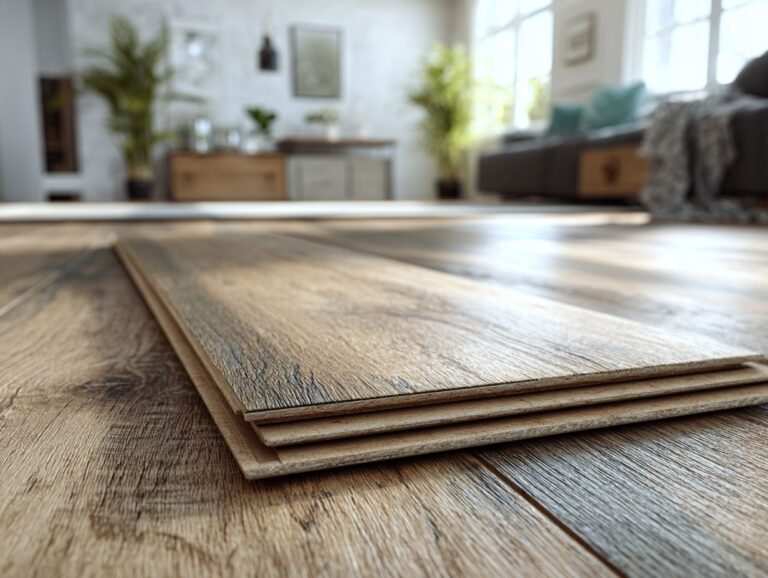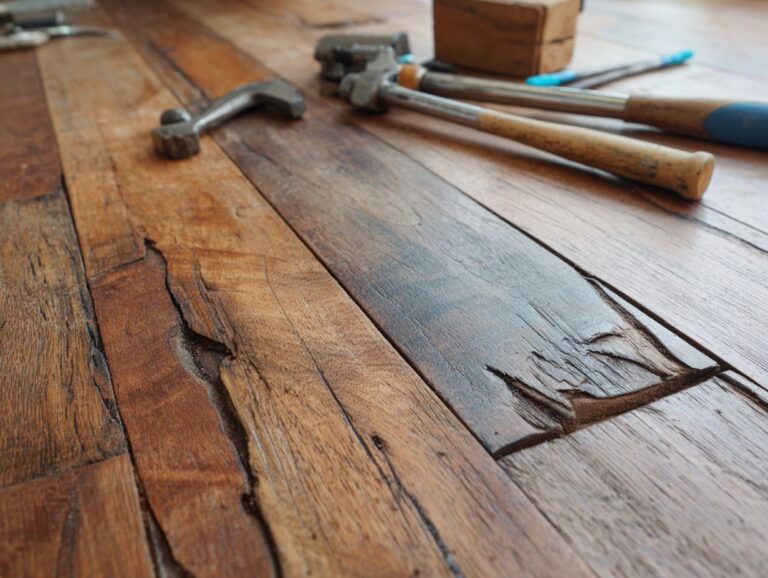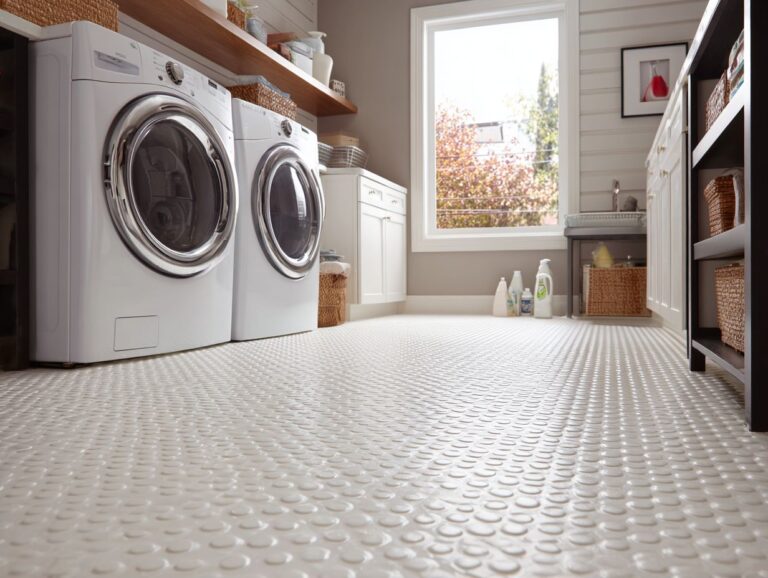Hardwood Flooring Grades Explained
Picking the right hardwood floor can improve the look of your home, but knowing the different grades of hardwood is important. From select grade to natural grade, each classification affects both appearance and durability. This guide explains the differences between hardwood grades, helping you choose the right one for your style and budget. Learn how these differences can improve your home and provide a strong investment.
Key Takeaways:
Contents
- Hardwood Flooring Market Overview
- What are Hardwood Flooring Grades?
- Types of Hardwood Flooring Grades
- Characteristics of Each Grade
- How Hardwood Grades Affect Pricing
- Choosing the Right Grade for Your Project
- Maintenance and Care for Different Grades
- Frequently Asked Questions
- What are hardwood flooring grades and why are they important?
- How many hardwood flooring grades are there?
- What is the difference between Clear and Select hardwood flooring grades?
- What type of wood is typically used for Common and Rustic hardwood flooring grades?
- Can hardwood flooring grades affect the price of the flooring?
- How do I decide which hardwood flooring grade is right for me?
Why Knowing Hardwood Grades Matters
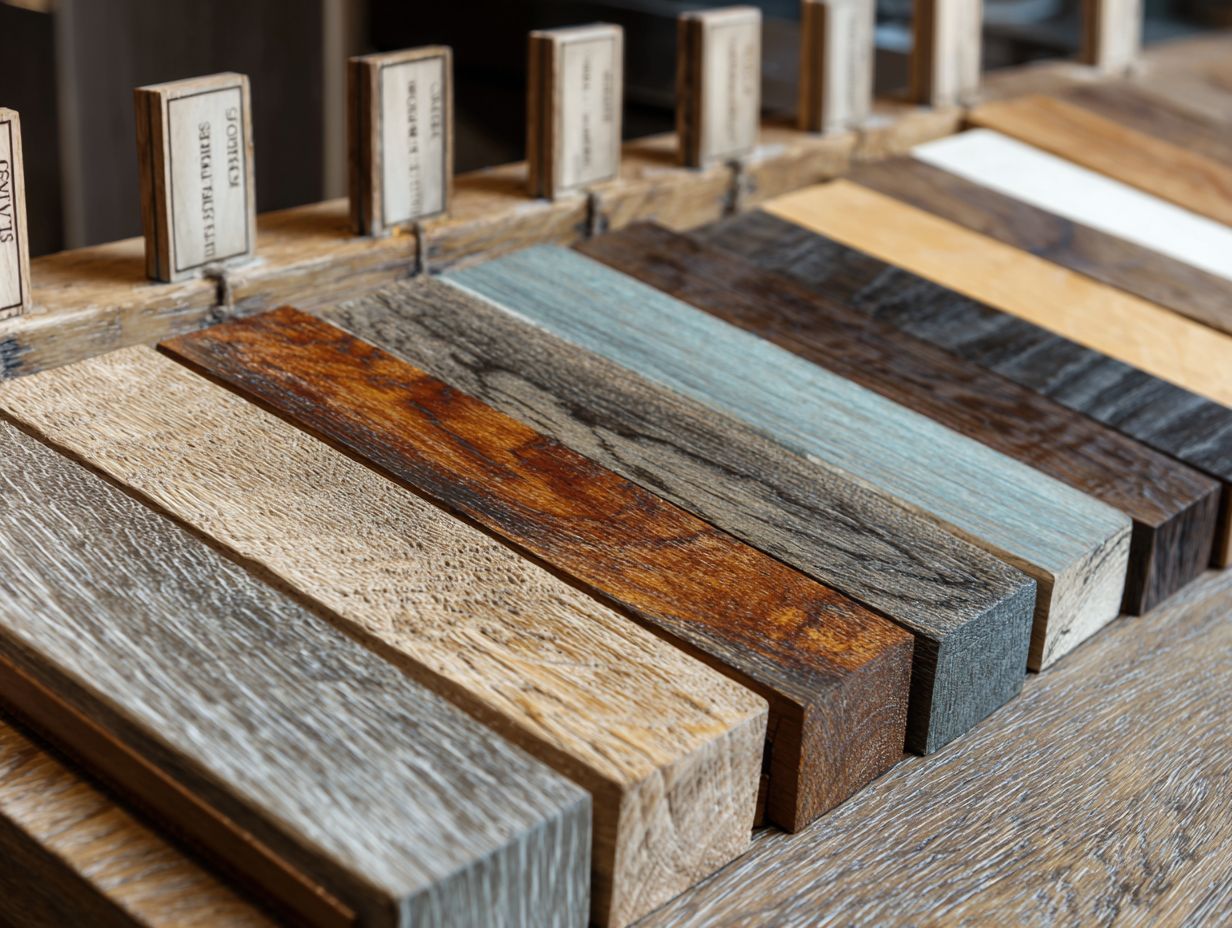
Recognizing the various hardwood grades can save consumers up to 20% on their flooring investments by preventing costly mistakes.
Knowing hardwood grades helps in choosing options that match both style preferences and quality levels. For example, select ‘Select’ grade for uniform appearance, ideal for modern homes, while ‘Common’ grade offers rustic charm and budget-friendliness.
Tools like the NWFA’s (National Wood Flooring Association) grading guidelines provide clear distinctions among the grades. People who spend time learning about these grades can avoid buying poor-quality wood, which often needs quick replacement.
By choosing wisely, homeowners can have durable and attractive flooring while saving money, typically around $500 on the entire flooring project.
Overview of Hardwood Flooring Types
Hardwood flooring comes primarily in two types: solid hardwood, like oak and maple, and engineered hardwood, both of which have unique benefits and applications.
Solid hardwood flooring, made from a single piece of timber, offers unmatched durability and can be sanded and refinished multiple times. It’s ideal for environments with low humidity, such as living rooms.
However, engineered hardwood is made with a plywood base and a hardwood top layer, allowing it to remain stable with humidity changes. This makes it a good choice for areas like basements or kitchens.
Both choices look good, but knowing these differences helps you pick the right flooring for your area.
Hardwood Flooring Market Overview
Hardwood Flooring Market Overview
Market Size and Growth: Market Value
Market Size and Growth: CAGR
The Hardwood Flooring Market Overview provides a detailed look into the market’s growth, value, and regional distribution. Knowing these elements is important for stakeholders in the flooring industry to make well-informed choices.
Market Size and Growth data indicates significant growth in the hardwood flooring market. The 2019 market size was valued at $33,279.5 million. By 2024, the market is projected to grow to $51,380 million. Looking further ahead, the 2033 forecast estimates the market size at a substantial $69,780 million. This growth trend shows the higher demand for hardwood flooring, due to its attractiveness, strength, and more building projects.
- The CAGR (Compound Annual Growth Rate) for wood flooring from 2019 to 2027 is 3.6%, reflecting steady growth. For the period from 2025 to 2033, the CAGR is slightly lower at 3.42%, indicating a slight deceleration, yet still a solid growth rate. This consistent growth highlights the market’s resilience and enduring popularity among consumers.
Regional Market Share analysis showcases the dominance of specific regions in the hardwood flooring market. In 2019, the Asia Pacific region held a leading market share of 58.79%. This dominance could be attributed to rapid urbanization, population growth, and economic development in countries like China and India, which fuel the construction and renovation sectors.
- Conversely, in 2024, North America captures a significant portion of the market with a 36.5% share. This is probably because people have more money to spend, prefer good-looking and quality flooring, and the real estate market is strong.
The Hardwood Flooring Market Overview data highlights notable growth in market size, driven by a steady CAGR and strong regional performances. The ongoing demand for hardwood flooring in different areas highlights the industry’s potential for growth and profit. Market participants can use this information to plan their business strategies, concentrating on new ideas, expanding into local markets, and taking advantage of growth trends.
What are Hardwood Flooring Grades?
The quality and appearance of hardwood flooring are sorted into grades, which strongly influence its price and people’s decisions when buying.
Definition and Purpose of Grading
Grading systems, such as those by the National Wood Flooring Association (NWFA), provide standardized evaluations to inform consumers about the appearance and quality of hardwood.
These grading standards categorize hardwood into specific classes:
- Clear – Free of imperfections, showcasing the wood’s natural beauty.
- Select – Contains minimal knots and color variations, ideal for high-end applications.
- Standard – More imperfections are acceptable, suitable for rustic aesthetics.
- Rustic – Encourages unique characteristics like knots and mineral streaks, perfect for informal settings.
Knowing these terms helps homeowners pick the right wood for their projects, ensuring they meet both look and functional needs.
Factors Influencing Hardwood Grades
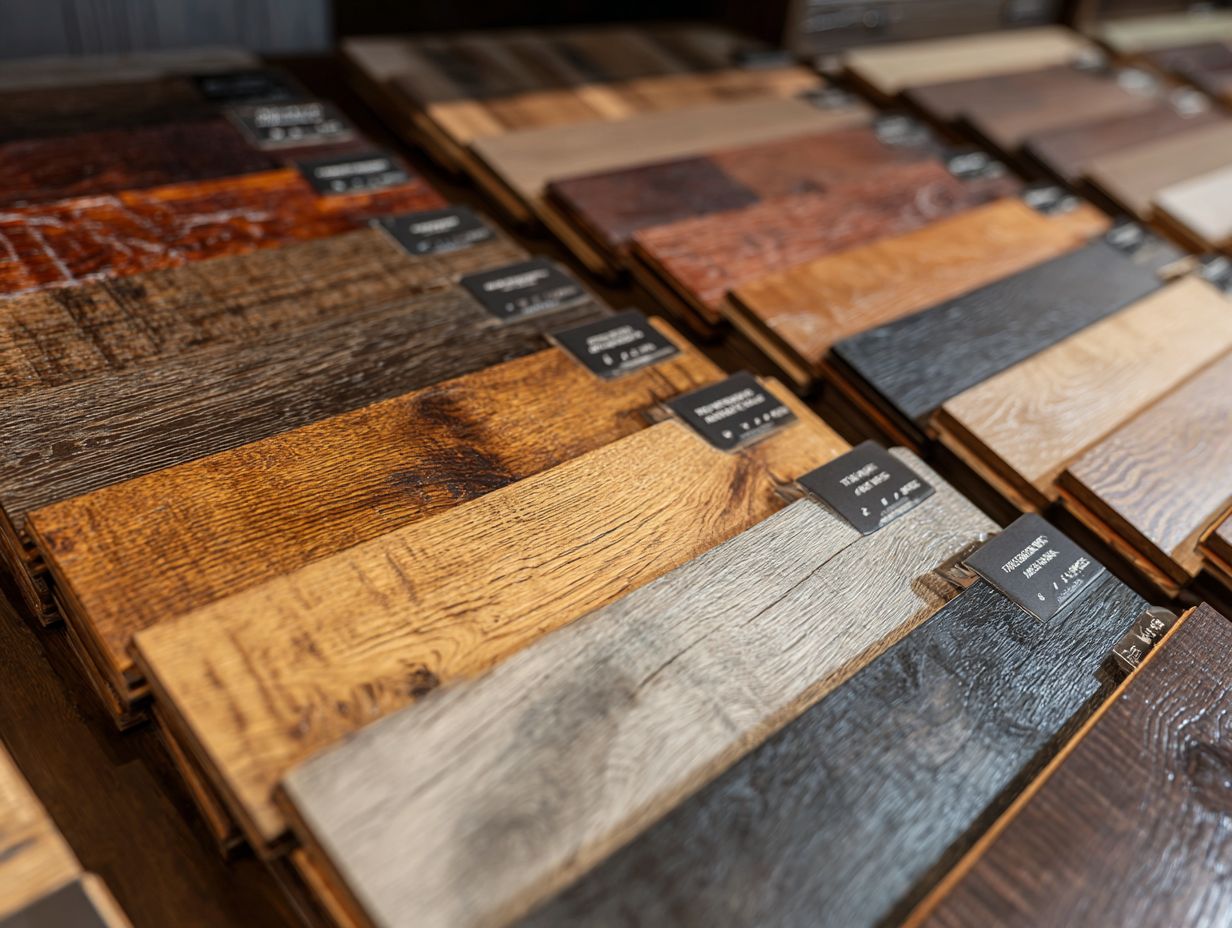
Key factors influencing hardwood grading include wood species, cut, natural defects, and the specific manufacturing processes employed.
Wood species, such as oak or maple, affect both appearance and durability. For example, red oak often has a lively pattern and is rated higher because it is strong.
The cut of the wood, whether plain-sawn or quarter-sawn, influences the stability and visual appeal. Natural defects, like knots or color variations, can lower a grade, with fewer visible defects generally leading to a higher grade.
Manufacturing steps, like kiln drying and surface finishing, affect the quality, so focusing on these details is important for buyers looking for top flooring choices.
Types of Hardwood Flooring Grades
There are different grades of hardwood flooring, each providing specific styles and qualities to meet various customer needs and tastes.
Clear Grade
Clear grade hardwood flooring represents the highest quality, featuring minimal imperfections and a uniform appearance ideal for luxury settings.
This flooring is often found in luxury homes, fancy stores, and stylish restaurants.
Within this category, hardwoods like oak, maple, and hickory are frequently chosen for their beauty and durability. Prices typically range from $8 to $12 per square foot, depending on species and finish.
For instance, oak offers a classic look with good hardness, while maple provides a lighter hue and fine grain.
To choose the right option, think about the lighting and style of your room to create a unified look.
Select Grade
Select grade hardwood offers a balance between quality and cost, showcasing some natural character while remaining aesthetically pleasing and consistent.
Typically priced between $5 and $10 per square foot, select grade hardwood is commonly used for high-quality furniture, cabinetry, and flooring.
Oak and Maple are often chosen because they are strong and have uniform grain patterns, which makes them good for projects where appearance matters.
When selecting wood, consider your project’s end use: Oak provides strength, while Maple offers a finer texture. Ensuring that you source your hardwood from reputable suppliers will also guarantee that you receive the expected quality and uniformity.
Common Grade
Common grade hardwood is often chosen for its rustic charm, featuring visible imperfections and variations that add character to any space.
This flooring generally costs between $3 and $6 per square foot, making it an affordable choice for casual spaces like family rooms or cafes.
Popular choices like oak and maple provide durability and a nice appearance; oak is known for its strength and distinct grain, while maple has a smoother surface and lighter color.
For installation, it’s best to hire a professional to make sure it fits correctly and looks good, especially in busy areas.
Rustic Grade
Rustic grade hardwood flooring emphasizes natural beauty with visible imperfections, making it a popular choice for achieving a cozy or farmhouse-style look.
This flooring type features knots, color variations, and grain patterns that tell a story, creating a distinctive look in any room.
Homeowners often choose oak, hickory, or pine varieties, each offering unique textures and character. When budgeting for rustic grade hardwood, expect prices between $2 to $5 per square foot.
It’s a good idea to buy from local suppliers or online stores that focus on reclaimed wood to guarantee that the wood is genuine and high-quality. Using this flooring with old or handmade furniture gives a rustic look.
Characteristics of Each Grade
Each type of hardwood has unique features in how it looks and lasts, which affects what customers pick and how happy they are with their purchase.
Appearance and Aesthetic Qualities
The aesthetic qualities of hardwood grades vary significantly, affecting how they complement interior designs and overall home decor.
For example, Clear or Select grades have minimal flaws, making them ideal for contemporary, uncomplicated areas that require a neat appearance.
In contrast, Rustic grade offers a more rugged and natural look with visible knots and variations, perfect for farmhouse or eclectic themes.
The finishing is very important-matte finishes easily fit into modern interiors, while glossy finishes can improve traditional designs.
Picking the right grade and finish can greatly improve the feel of your home.
Durability and Performance Factors
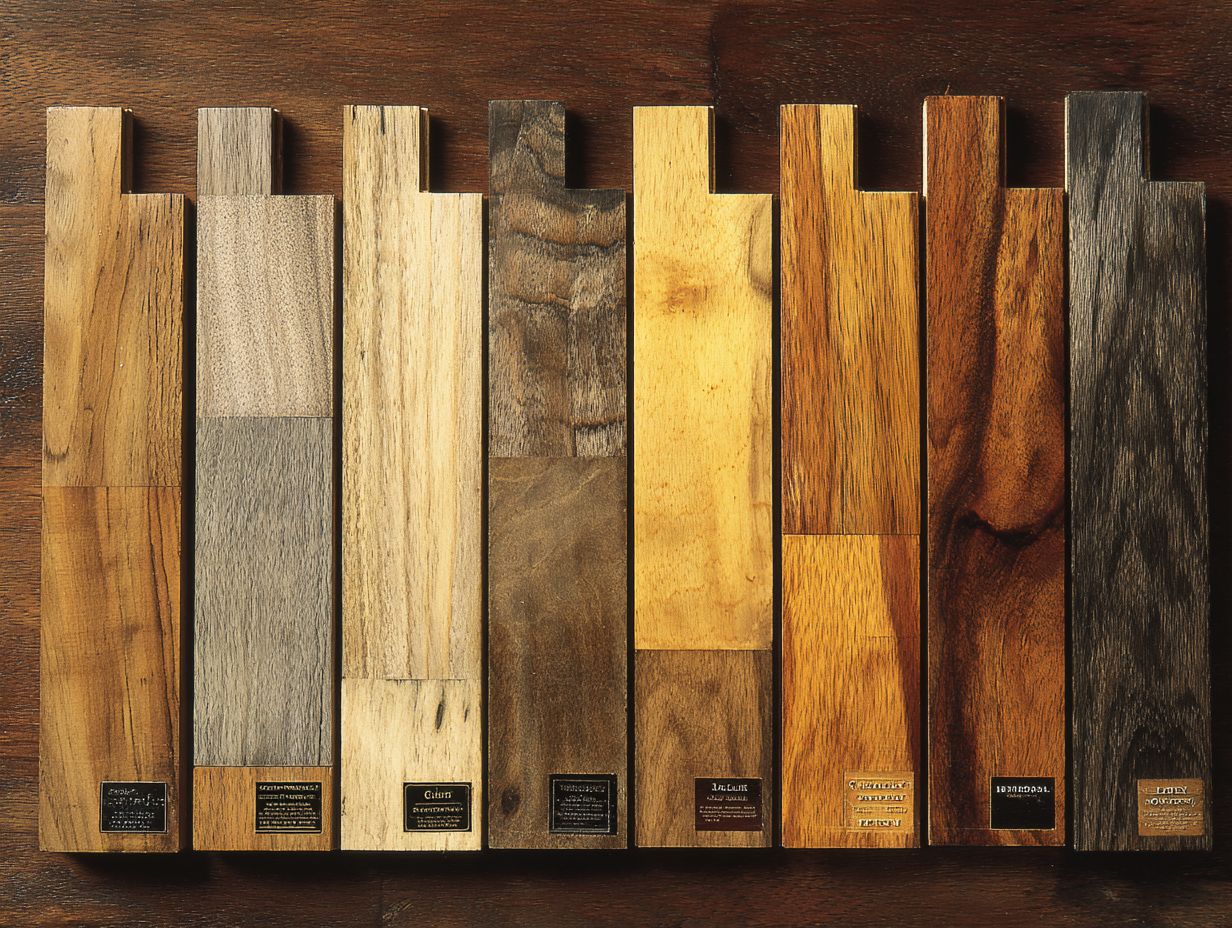
Durability is a critical factor in grade selection, with higher grades often featuring superior resistance to wear, dents, and moisture.
For example, domestic hardwoods like Oak, with a Janka hardness rating of around 1,300, are excellent for high-traffic areas. On the other hand, tropical hardwoods like Brazilian Cherry, boasting a rating of approximately 2,350, offer even greater durability.
To maintain these floors, regularly sweep or vacuum to remove dirt and debris, and use a damp mop with a pH-neutral cleaner monthly. Consider applying a protective layer every few years to increase water resistance and extend the life of your flooring.
How Hardwood Grades Affect Pricing
The grades of hardwood affect their cost, with noticeable differences based on their quality, look, and how well they fit certain purposes.
Cost Comparison Among Grades
A price check shows that clear grade flooring can cost more than $12 per square foot, while rustic grade can cost less than $2, showing a wide range in prices.
When choosing among these grades, think about how they look, how long they last, and how much it costs to install them.
Clear grade flooring has a smooth look and is durable, making it a good choice for high-end projects. Rustic grade, while less expensive, provides a more natural appearance, ideal for casual spaces.
Labor costs can vary significantly by region; urban areas may see installation fees ranging from $3 to $8 per sq ft, whereas rural locations could lower those costs.
Opt for samples to test both looks before committing.
Value for Money Considerations
When picking hardwood, knowing the long-term cost-effectiveness is important because better quality usually means it lasts longer and looks better.
Investing in higher-grade hardwoods, like Brazilian Cherry or Oak, can yield significant benefits over time.
For instance, while Oak may cost around $6 per square foot and last 30 years with proper care, Brazilian Cherry, priced at approximately $10 per square foot, can last over 50 years due to its superior hardness and resistance to wear.
Over time, the initial cost difference is offset by lower maintenance and replacement needs.
To get the best return on investment, regularly maintain your wood using appropriate cleaning products and think about using environmentally friendly finishes that keep the wood looking good and in good condition.
Choosing the Right Grade for Your Project
Choosing the best hardwood grade depends on your project requirements, how you live, and your personal style to get the best outcome.
Assessing Your Needs and Preferences
Homeowners should start by evaluating their specific needs, preferences, and the intended use of the space to guide their hardwood grade selection.
Consider the amount of foot traffic in your home. For high-traffic areas like hallways, select a durable grade such as rustic or select.
What you like visually is important too; character grades have distinct knots and grains that add appeal, but they might not match all styles.
Budget is important-while some grades can cost between $5 to $8 per square foot, rustic choices are cheaper, often starting at about $3 per square foot.
Balancing these factors will help you make an informed choice.
Environmental Considerations
Environmental factors, like obtaining eco-friendly hardwood, are becoming more important for homeowners worried about their effect on the environment.
To make sure your hardwood selections are good for the environment, check for labels such as the Forest Stewardship Council (FSC) certification, which confirms the forest is managed responsibly.
Companies like Arborite and Khrs prioritize sustainability, offering products sourced from responsibly managed forests. When selecting hardwood, consider grades as well; higher grades often indicate fewer defects and more durability, reducing the need for replacement.
Picking certified sustainable hardwood helps the environment and often results in better quality for your floors or cabinets.
Maintenance and Care for Different Grades
Properly maintaining your hardwood floors can extend their lifespan significantly, regardless of the type you choose. For a deeper understanding of the various types available, our complete guide to hardwood flooring types and species offers expert insights.
Cleaning and Upkeep Tips
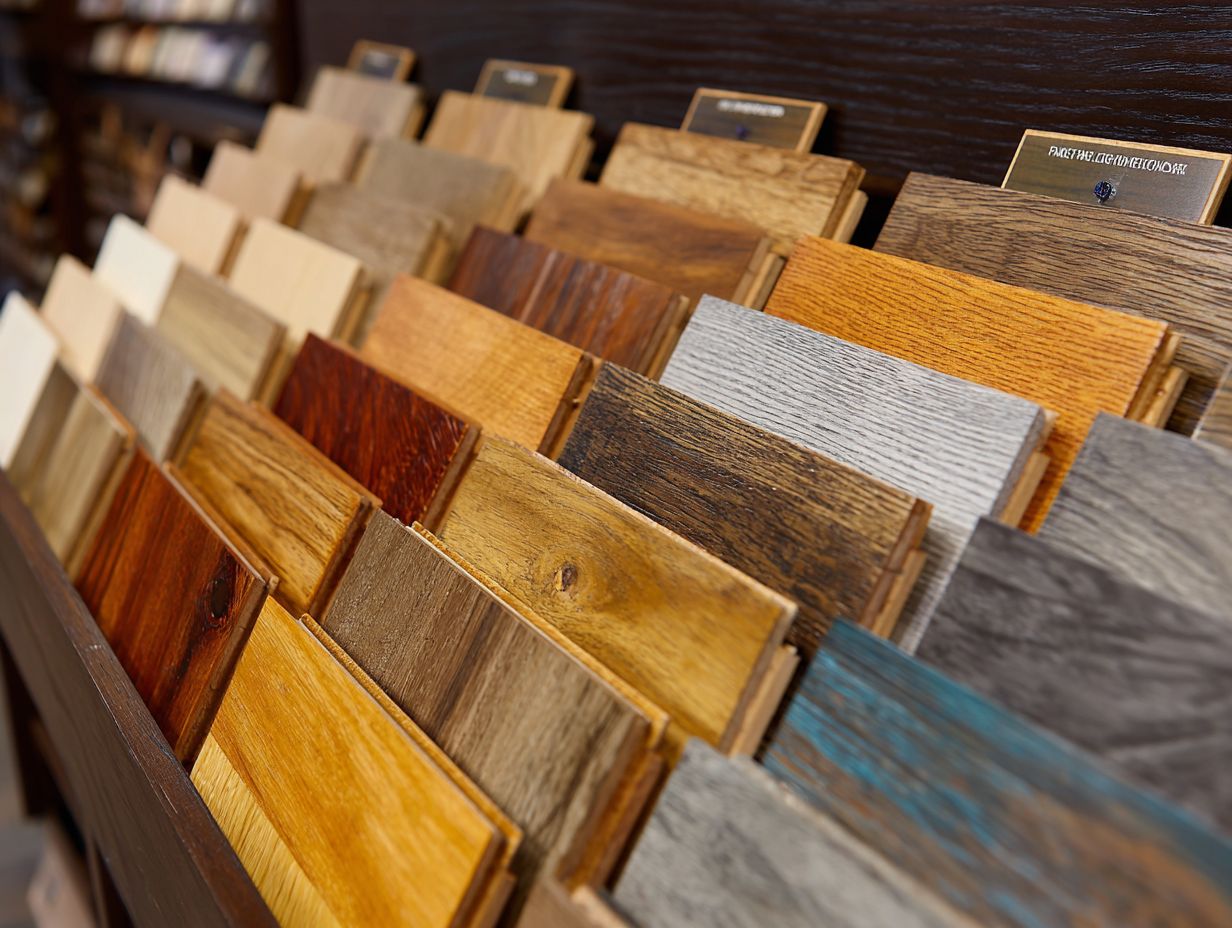
Regular cleaning with products like Bona Hardwood Floor Cleaner ($12.99) helps keep hardwood floors looking good and lasting longer.
To maintain your hardwood floors, establish a cleaning routine based on foot traffic. For homes with low foot traffic, clean every two weeks. For busy areas, clean once a week.
Start with a dust mop or vacuum to remove dirt, and follow up with a damp mop using a pH-neutral cleaner. Avoid wet mopping and harsh chemicals, as these can damage the finish.
Common mistakes include using furniture polish, which can leave residues, and neglecting to place mats at entryways to prevent grit from scratching surfaces.
Regular maintenance can significantly extend the life of your floors.
Repairing and Refinishing Options
Repairing and refinishing hardwood floors can rejuvenate their appearance and extend their life even for lower grades.
For homeowners, a DIY refinishing can cost between $1 to $2 per square foot if you choose to rent equipment like a drum sander for around $50 a day.
Another option is to hire a professional, which costs about $3 to $5 per square foot. This option offers professional skills but is more expensive.
To evaluate the best option, consider the scale of the project and your skill level. If you are dealing with small areas or minor fixes, doing it yourself might work. For big areas or major damage, it’s usually best to hire a professional to make sure the work lasts and looks good.
Final Thoughts on Hardwood Flooring Grades
Picking the right hardwood flooring can enhance the appearance and functionality of your home, making it a wise investment.
To choose the best grade for your needs, consider factors such as appearance, durability, and price.
For instance, Select grade offers consistent color and minimal knots, ideal for formal spaces, while #2 Common grade provides a rustic, character-rich look suitable for cozy settings.
Research local suppliers or manufacturers like Home Depot or Lumber Liquidators, ensuring you see samples firsthand. Compare warranties and customer reviews to find the most reliable option.
Spending time choosing carefully will provide both beauty and lasting worth.
Frequently Asked Questions
What are hardwood flooring grades and why are they important?
Hardwood flooring grades refer to the quality and appearance of the wood used for the flooring. They are important because they help to determine the overall look and durability of the flooring.
How many hardwood flooring grades are there?
There are four main hardwood flooring grades: Clear, Select, Common, and Rustic. Each grade is determined by the number of knots, mineral streaks, and other imperfections in the wood.
What is the difference between Clear and Select hardwood flooring grades?
Clear grade hardwood flooring is the highest quality and has the most uniform appearance with very few knots or imperfections. Select grade has slightly more imperfections, but still maintains a clean and uniform look.
What type of wood is typically used for Common and Rustic hardwood flooring grades?
Common grade hardwood flooring is usually made from the lower portion of the tree, which contains more knots and natural variations. Rustic grade is made from the lower portion of the tree and also includes more mineral streaks and other imperfections.
Can hardwood flooring grades affect the price of the flooring?
Yes, the higher the grade of the hardwood flooring, the more expensive it will be. Clear and Select grades typically cost more, while Common and Rustic grades are more affordable.
How do I decide which hardwood flooring grade is right for me?
The choice is really about what you like and the look you want for your home. If you want a more uniform and clean look, a higher grade like Clear or Select would be best. If you prefer a more natural and rustic look, Common or Rustic grades would be a great choice.
